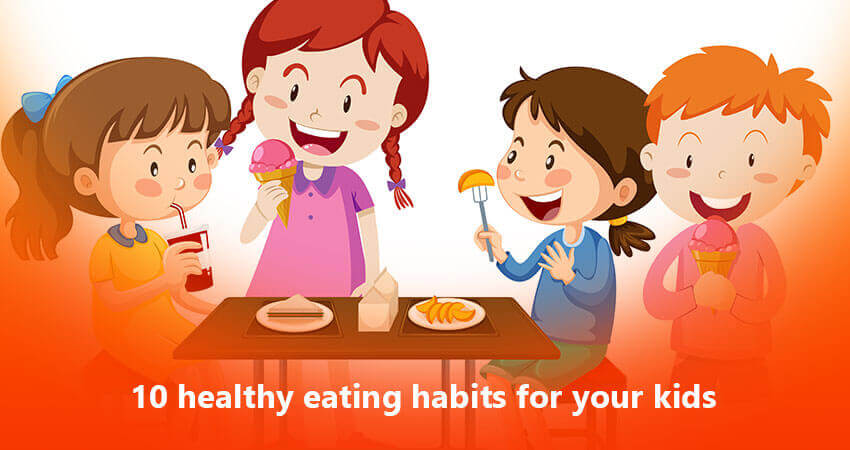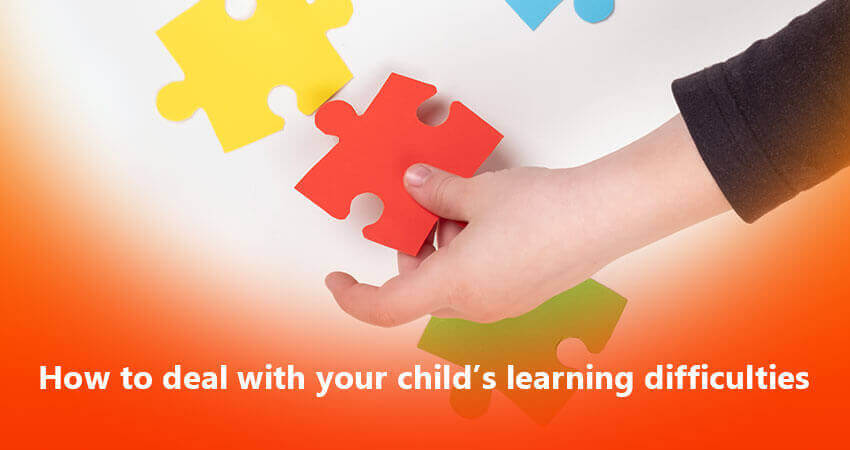10 healthy eating habits for your Kids

Develop these healthy habits in your children and they will be well set up to become healthy adults.
1. Be adventurous
One of the best gifts you can give your kids is to train their taste buds to enjoy many different flavors, not just sugar, fat and salt. A child may have to try something up to 10 times before they start to enjoy it, so don’t give up on the first try. A good approach is to tell your children that when they try new foods it is a sign that they are growing up. Praise them when they try new foods, even if they don’t want to eat it all.
Take them shopping and let them choose a new food. Serve it with foods they love and they may love the new food too.
2. Eat five or more colors a day
Different colours have different health effects so it’s important to eat lots of different colours each day. Make it fun:
- Have them list their favourite fruit and vegetables and class them into colours. Then choose which ones they want to eat at each meal through a day, making sure they use a different colours. They can keep a record of which colours they eat each day and receive a different coloured sticker for each coloured vegetable they eat.
- Growing herbs and vegetables at home is fun and teaches children where food really comes from. Involve your children or grandchildren in planting, watering, weeding and most importantly, eating them.Chances are they will at least take a little bite of something they have grown themselves.
3. Drink water
Encourage your kids to take a bottle of water whenever they go out, and give them water with their meals. Keep juice and other sweet drinks as ‘sometimes’ food, not ‘everyday’ food.
Juice has valuable nutrients and gives a concentrated energy boost for active, fast- growing children who can’t seem to eat enough food. But we want our kids to go for water when they are thirsty, not insist on a sugary drink.
Explain that their body needs water for sport and their brain needs water to concentrate (put a sponge in water and compare it to a dried out sponge). If our brain and body are dried out, we can get headaches or muscle cramps and feel sluggish at school and on the sports field.
4. Eat breakfast
Most children eat breakfast because their parents give it to them or it is part of the family morning routine. But the breakfast habit can soon slip when teenagers go flatting.
Even if it is just a banana and a glass of milk, teach your children that some food in their stomach kick-starts the body for the day, making it easier to control weight and giving them energy for work, study and play.
5. Listen to your tummy
Although children are born with the ability to stop eating when they are full, conscientious parents, concerned about whether their kids have eaten the right stuff and enough of it, often over-ride this natural regulating mechanism.
Teach older children to listen to their tummies and ask themselves both quantity and quality questions: “Is my tummy full? Will I feel sick if I eat those extra biscuits? Is this what my body really needs right now?”
The big goal here is to make children aware of the many cues around them enticing them to eat even if they are not hungry. Just because they are at the movies or passing the food hall at the shopping centre, do they really need to eat?
6. Sit at the table to eat
There’s a time to play, a time to work, a time to rest and a time to eat. All too often the ‘time to eat’ is all the time. We balance dinner on our lap in front of TV, we stuff in a sandwich while continuing to work, and we grab snacks on the run.
Eating at the table not only reduces snacking, grazing and the risk of choking as you run around with food in your mouth, it also teaches social skills such as table manners, how to use a knife and fork, how to talk over a meal and patience to wait while others finish.
7. Eat slowly
As much as we would love our children to finish their meal in minutes rather than hours, it won’t be too many years before we will be nagging those same kids to slow down and chew their food ‘properly’ rather than inhaling it.
This is a good time to remind them that it takes about 20 minutes for the message to get from their stomachs to their brains that they are full. So eating slowly is great for weight control. It also gives them time to chat – preferably without their mouths full!
8. Enjoy cooking
Children are more likely to become discerning, adventurous eaters if they know how to cook. Give them their own aprons and let them help you in the kitchen.
Buy a kids’ cookbook for inspiration and as they become more confident, let them cook dinner once a week. Here are some kid-friendly recipes to get them started on cooking:
- Homemade pizza (make the dough too)
- Roast chicken and vegetables
- Lasagne and other pasta bakes
- Crumbles and simple cakes
If the thought of kids in the kitchen sounds horrific, enroll them in school holiday cooking classes. As a guide, at the following ages, kids should be able to cook/help with these:
Age 4-5: Mix; add ingredients; peel bananas; pat out dough; lick the bowl!
Age 6-8: Break an egg (into a separate cup... just in case!); put mixture into tin; make toast; decorate cupcakes; learn to peel and chop; mash; stir.
Age 9-12: Make pita bread pizzas; cook roasts; make sauce; follow simple recipes to make meals.
9. No routine visits to fast food outlets
The latest trend for fast food chains to offer healthy options for kids is encouraging; but it’s still not a great idea for families to get into the habit of eating fast food on a regular basis. As ravenous young adults there’s no guarantee they will still choose the ‘healthy’ option.
There are plenty of alternative fast food options. Try homemade pizza, burgers or burritos. Or if you don’t feel like cooking, what could be easier than boiled eggs or baked beans on toast?
10. Be active
Regular exercise, whether it’s organised sport or active play, is a vitally important habit to build into your children. It keeps them fit, builds strong bones, tones up muscles, burns excess energy and helps them maintain a healthy weight.
Television, computers, PlayStation, hours of homework, busy roads and the odd weirdo wandering the streets all conspire to keep our kids sitting instead of running.
In this sedentary society it’s more important than ever to get your kids into a habit of moving. Here are some ideas:
- Go cycling together
- Walk with them to school, shops and friends’ houses whenever possible
- Limit TV and computer time
- Take them skating, rock-climbing, tramping or cycling















Leave a Reply
Your email address will not be published. Required fields are marked *
Comments
No comments available